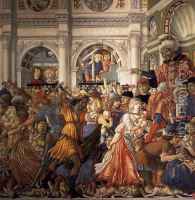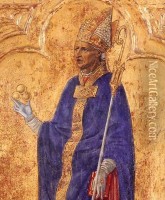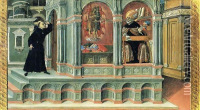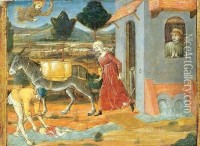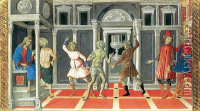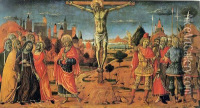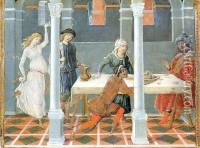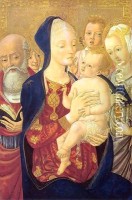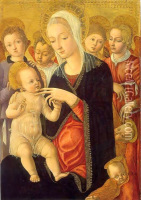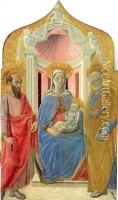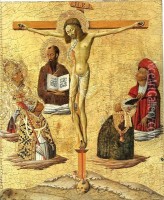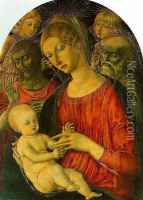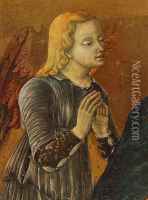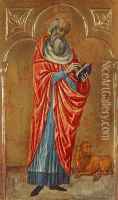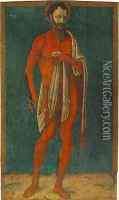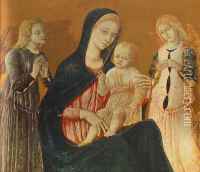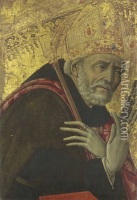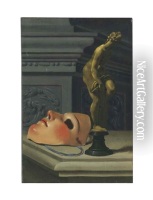Matteo Di Giovanni Paintings
Matteo di Giovanni, also known as Matteo da Siena, was an Italian Renaissance painter who was born around 1430 in Borgo Sansepolcro, Tuscany, and died in 1495 in Siena. He is particularly noted for his contributions to the Sienese School of painting, which was characterized by its continuation of Gothic elements alongside the emerging Renaissance style. Matteo's work is distinguished by its delicate coloring, detailed landscapes, and serene religious subjects. He was deeply influenced by the works of earlier Sienese artists such as Duccio di Buoninsegna and Simone Martini, and his style represents a bridge between the medieval traditions of Sienese art and the new Renaissance approach to painting.
Matteo di Giovanni's career was largely spent in Siena, where he became a notable figure in the local art scene. He received numerous commissions for altarpieces and religious works from churches and confraternities, which helped to establish his reputation as a leading painter of his time. One of his most famous works is the 'Assumption of the Virgin' altarpiece for the cathedral of Siena, which showcases his skill in creating complex compositions and his ability to convey deep spiritual themes through art.
Despite his success, not much is known about his personal life, and his work was somewhat overshadowed by other Renaissance masters in subsequent centuries. However, in the late 19th and early 20th centuries, art historians began to reassess his contribution to the Italian Renaissance, recognizing the unique blend of Gothic and Renaissance elements in his work and his role in the development of the Sienese School. Today, Matteo di Giovanni is celebrated for his contributions to the rich tapestry of Renaissance art, and his works are held in high esteem by art historians and collectors alike.
